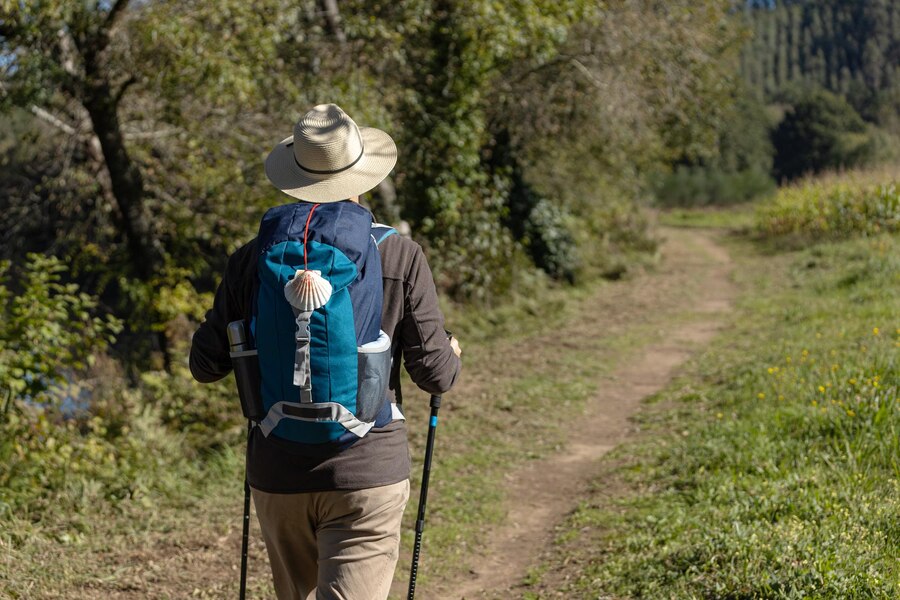South America is a haven for adventure enthusiasts, offering breathtaking landscapes, challenging terrains, and diverse ecosystems. For solo travelers, the continent promises an unforgettable hiking experience filled with personal discovery and awe-inspiring natural beauty. Whether you're drawn to the towering Andes, the mystical Amazon, or the coastal trails of Patagonia, South America has something for everyone. Below, we delve into how to plan a solo hiking trip to this remarkable continent, offering tips and insights to ensure a safe and enriching journey.

Why South America is Ideal for Solo Hikers
South America’s diverse trails cater to all levels of hikers, from beginners to seasoned trekkers. Popular destinations like Patagonia, the Inca Trail in Peru, and the Amazon rainforest provide well-maintained paths and guided tour options, making it easier for solo hikers to navigate. Many trails are dotted with fellow travelers, creating opportunities for camaraderie and shared experiences. Additionally, local communities are welcoming, and the abundance of hostels and lodges ensures affordable accommodation.
Click Now: Discover Patagonia Hiking Trails
Click Now: Top Hikes in Peru
Essential Planning for a Solo Hiking Adventure
Before embarking on your journey, research the trails that align with your skill level and interests. Secure permits for popular hikes like the Inca Trail well in advance, as they are often booked months ahead. Ensure you have a comprehensive travel insurance plan that includes coverage for hiking-related incidents. Pack essential gear, including a sturdy backpack, weather-appropriate clothing, a first-aid kit, and navigation tools. Understanding the local climate and terrain is crucial to preparing adequately.
Click Now: Hiking Gear Checklist
Click Now: Travel Insurance Options for Hikers
Must-Visit Hiking Destinations for Solo Travelers
South America boasts numerous iconic trails. Patagonia’s Torres del Paine National Park in Chile is famous for its stunning glacial landscapes and wildlife. Peru’s Inca Trail offers a cultural journey culminating in Machu Picchu. Ecuador’s Quilotoa Loop provides a mix of scenic views and interactions with local indigenous communities. Brazil’s Chapada Diamantina National Park and Colombia’s Lost City trek are also standout options.
Click Now: Guide to Torres del Paine
Click Now: Exploring Ecuador's Quilotoa Loop
| Trail Name | Difficulty Level | Best Season | Unique Feature |
|---|---|---|---|
| Inca Trail, Peru | Moderate to Hard | May to October | Historical ruins |
| Torres del Paine, Chile | Moderate to Hard | November to March | Glacial views and wildlife |
| Quilotoa Loop, Ecuador | Easy to Moderate | June to September | Indigenous culture |
| Lost City Trek, Colombia | Moderate | December to March | Ancient ruins |
| Chapada Diamantina, Brazil | Moderate to Hard | April to October | Unique rock formations |
Click Now: Top Trails in Colombia
Click Now: Hiking in Brazil's National Parks
Safety Tips for Solo Hikers
Hiking alone requires extra precautions. Share your itinerary with a trusted friend or family member, and keep them updated on your location. Always carry a fully charged phone and a portable charger. Avoid venturing off marked trails and be aware of local wildlife and weather conditions. Learn basic phrases in the local language to communicate effectively if needed. Joining guided hikes for more remote trails can add an extra layer of security.
Click Now: Safety Tips for Solo Travelers
Click Now: Emergency Numbers for South America
What to Eat and Drink While Hiking
South America’s culinary offerings can be a delightful part of your journey. Local markets are a great place to stock up on fresh fruits, nuts, and bread for your hikes. Traditional meals like empanadas and quinoa dishes provide the energy needed for long treks. Always carry a reusable water bottle with a filter, as staying hydrated is crucial, especially in high-altitude regions.
Click Now: South American Cuisine Guide
Click Now: Healthy Snacks for Hiking
FAQs
How can I stay safe as a solo traveler in South America?
Stick to well-traveled trails, avoid hiking after dark, and stay informed about local conditions. Use reliable transportation and accommodations with good reviews.
What is the best time of year to hike in South America?
The best time varies by region. For example, the Andes are best during the dry season (May to September), while Patagonia’s trails are most accessible from November to March.
Do I need a guide for hiking in South America?
Some trails, like the Inca Trail, require a guide. Even when not mandatory, hiring a guide can enhance your experience and provide local insights.
What should I pack for a solo hiking trip in South America?
Pack essentials like hiking boots, layered clothing, a first-aid kit, a map or GPS device, and sufficient food and water. Include personal identification and cash for remote areas.
Is it safe for women to hike alone in South America?
While many women have had positive experiences hiking solo, it's essential to take precautions. Stay in safe areas, trust your instincts, and consider joining group hikes if unsure.
Conclusion
Planning a solo hiking trip to South America can be a transformative experience. From the majestic peaks of the Andes to the lush Amazon rainforest, the continent offers unparalleled opportunities for adventure and self-discovery. By taking the time to research, prepare, and stay safe, you can enjoy an unforgettable journey through some of the world’s most stunning landscapes. Remember to respect the environment and local cultures, leaving no trace as you explore. Whether you're seeking solitude, cultural enrichment, or physical challenge, South America delivers an adventure of a lifetime. So gear up, step out, and let the trails lead you to extraordinary memories.
Click Now: Eco-Friendly Hiking Tips
Click Now: Cultural Etiquette in South America
